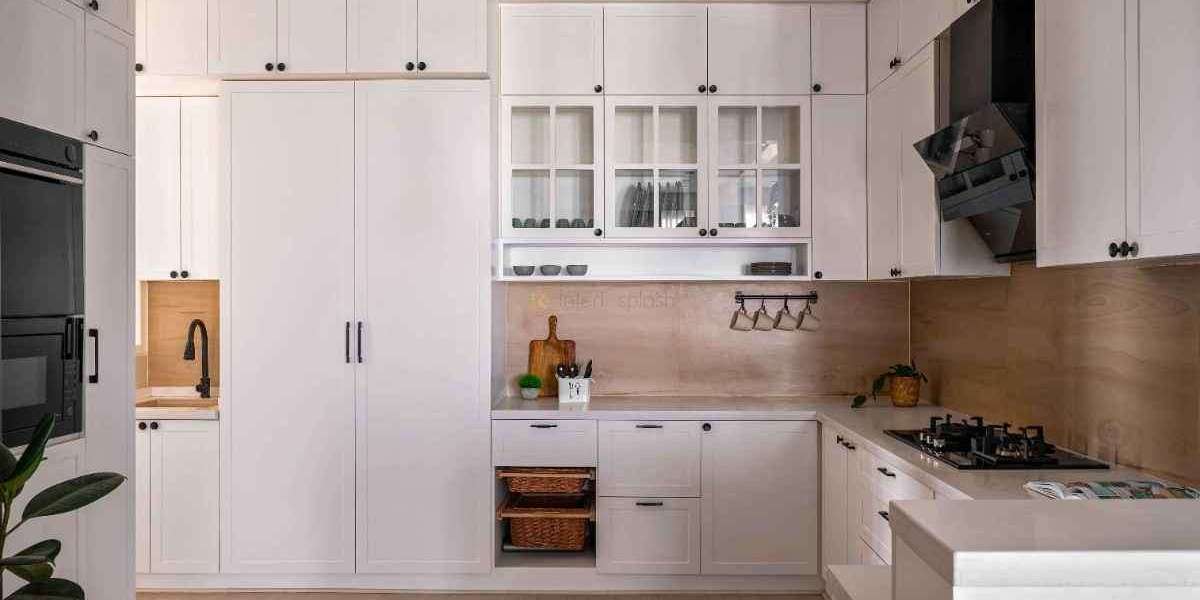Natural light is a key element in luxury interior design, influencing the ambiance, aesthetics, and functionality of any space. Top luxury interior designers know how to optimize the flow of sunlight into interiors, transforming dark and gloomy rooms into bright, inviting spaces. Whether you're working with an interior design company or planning a DIY renovation, understanding the art of natural light can make a significant difference in the overall feel of your home.
In this article, we’ll explore actionable tips from luxury interior designers in Bangalore on how to maximize natural light, enhancing the beauty and comfort of your living spaces.
Why Natural Light Matters in Luxury Interior Design
Natural light is more than just a way to illuminate your home; it’s a design element that can affect everything from the perception of space to mood and energy efficiency. Here's why natural light is crucial in luxury interior design:
- Enhances Mood and Well-being: Exposure to natural light can improve mood, reduce stress, and boost productivity.
- Increases Space Perception: Rooms filled with natural light appear more spacious and open.
- Energy Efficiency: Utilizing natural light reduces the need for artificial lighting, lowering energy costs.
- Highlights Design Elements: Natural light can accentuate architectural features, textures, and colors, adding depth and dimension to interiors.
1. Optimizing Window Placement and Size
One of the most effective ways luxury interior designers maximize natural light is through strategic window placement and sizing. Here’s how they do it:
a. Floor-to-Ceiling Windows
- Installing floor-to-ceiling windows allows maximum light penetration, making the room appear brighter and larger.
- Ideal for living rooms, dining areas, and bedrooms with scenic views.
b. Skylights and Roof Windows
- Skylights are a great way to introduce light into darker areas such as hallways, bathrooms, or attics.
- They create a dramatic effect, making the room feel airy and expansive.
c. Corner Windows
- Corner windows provide light from two directions, reducing shadows and creating a balanced, evenly lit space.
- Perfect for home offices, kitchens, and living rooms.
2. Choosing the Right Window Treatments
Window treatments play a vital role in controlling natural light. Luxury interior designers often use specific types to enhance light flow without compromising privacy.
a. Sheer Curtains
- Use sheer curtains to diffuse light gently while maintaining privacy.
- Ideal for living rooms and bedrooms where soft, ambient light is desired.
b. Blinds and Shutters
- Choose adjustable blinds or shutters to control the amount of light entering a room.
- Perfect for spaces that require variable light conditions, such as home offices or media rooms.
c. Reflective Window Films
- Reflective films reduce glare while maintaining a high level of light transmission.
- Suitable for rooms with direct sunlight exposure.
3. Utilizing Mirrors and Reflective Surfaces
Mirrors and reflective surfaces are powerful tools for bouncing light around a room. Here’s how luxury interior designers use them:
a. Strategic Mirror Placement
- Place large mirrors opposite windows to reflect light deeper into the room.
- Use mirrored furniture or decor to create a sense of spaciousness.
b. Glossy Finishes
- Opt for glossy finishes on walls, floors, or furniture to reflect more light.
- High-gloss paint on ceilings can make them appear higher, enhancing the room's brightness.
c. Metallic Accents
- Incorporate metallic elements like gold, silver, or chrome to add sparkle and reflect light.
- Ideal for luxury living rooms and dining areas.
4. Color Palette and Material Choices
The choice of colors and materials significantly affects how light interacts with a space. Luxury interior designers often follow these principles:
a. Light and Neutral Colors
- Use light, neutral colors on walls and ceilings to reflect more light.
- Soft hues like whites, creams, and pastels make spaces feel airy and open.
b. Translucent Materials
- Use materials like frosted glass, acrylic, or translucent stone to allow light to pass through.
- Perfect for partition walls, doors, or room dividers in small spaces.
c. Natural Materials
- Incorporate natural materials like light woods, stone, and linen to complement natural light.
- These materials add warmth and texture without absorbing too much light.
5. Interior Layout and Furniture Arrangement
The way you arrange furniture can impact the flow of light in a room. Luxury interior designers use these techniques:
a. Open Floor Plans
- Open floor plans allow light to flow freely between spaces, reducing dark corners and creating a unified look.
- Ideal for modern, minimalist homes.
b. Low-profile Furniture
- Use low-profile furniture to avoid obstructing windows and blocking light.
- Opt for furniture with slender legs or open bases to maintain a sense of openness.
c. Glass and Transparent Furniture
- Use glass tables, transparent chairs, or acrylic shelves to reduce visual clutter and enhance light flow.
- Perfect for small or narrow rooms that need to appear more spacious.
6. Adding Artificial Lighting to Complement Natural Light
While natural light is the goal, sometimes artificial lighting is necessary to fill in the gaps. Here’s how luxury interior designers seamlessly blend both:
a. Layered Lighting
- Use a combination of ambient, task, and accent lighting to create a balanced illumination scheme.
- Position lights near windows to amplify natural light during the evening.
b. Dimmable Fixtures
- Choose dimmable light fixtures to adjust the intensity of artificial light as needed.
- Ideal for living rooms and bedrooms where lighting needs vary.
c. Recessed and Track Lighting
- Use recessed lighting to provide a soft, even glow without competing with natural light.
- Track lighting can be directed to highlight architectural features or artwork.
Conclusion
Maximizing natural light is a cornerstone of luxury interior design. By implementing these expert tips, you can create bright, welcoming spaces that not only look stunning but also promote a sense of well-being. Whether you’re working with an interior company in Bangalore or embarking on your own design journey, focusing on natural light can elevate your home’s interior to a new level of luxury and comfort.
Embrace the power of natural light to transform your living spaces, making them more vibrant, spacious, and inviting. With the right strategies, you can harness the beauty of sunlight to enhance every corner of your home.








